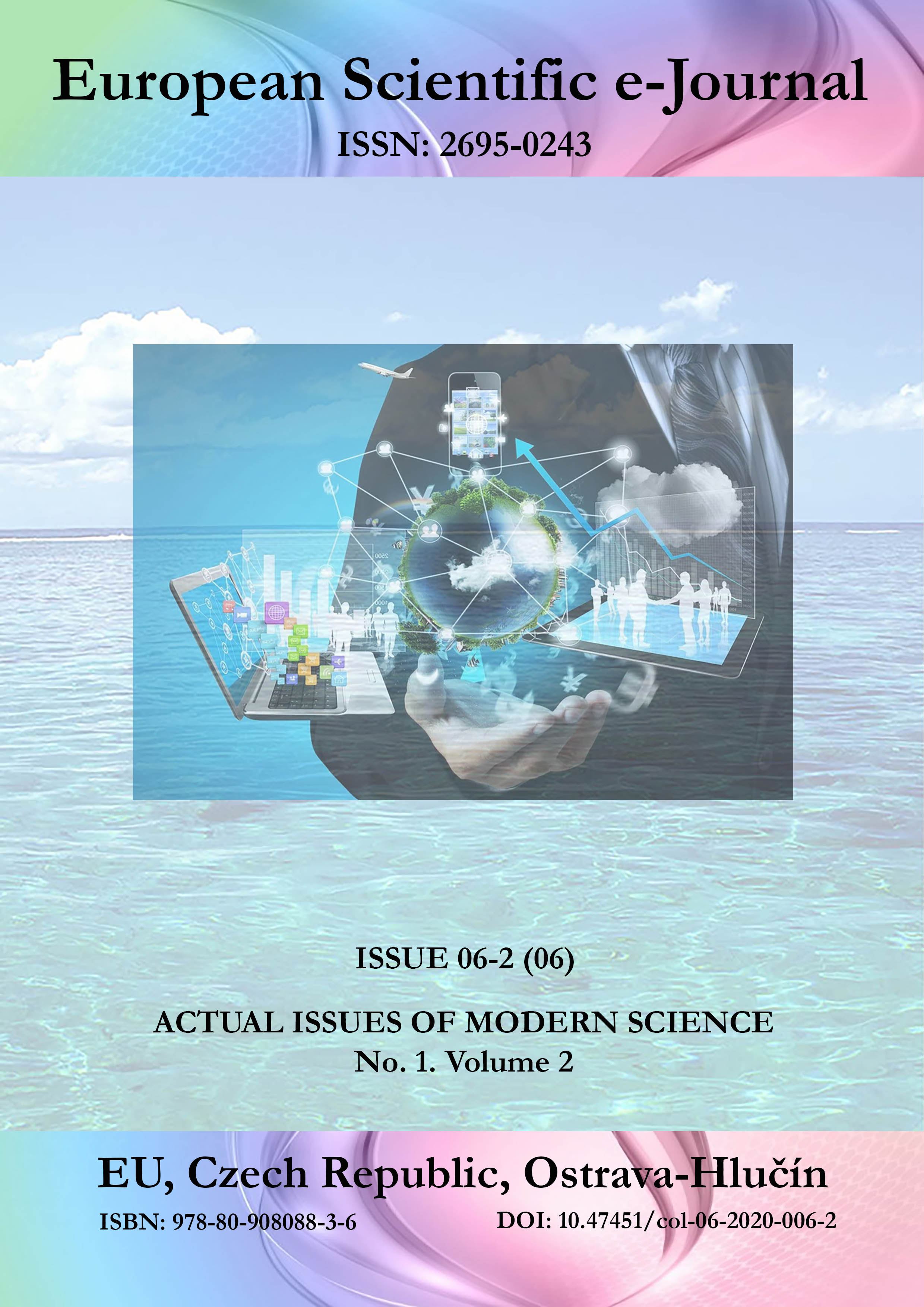Relevance of the Application of the Theory of Fuzzy Sets in the Calculation of the Strategic Security of a Complex Technical System
DOI:
https://doi.org/10.47451/inn2020-12-002Keywords:
fuzzy set theory, strategic security, technical systems, stability domainAbstract
The relevance of the topic is related to the problem of protection and security of technical systems in the era of globalization and information warfare, as well as determining the strategic reserve of stability for production cycles. The study object was mathematical methods of modelling production processes and determining the point of the production system stability. The study purpose was to use the fuzzy set device to determine the point of stability of the production system. To implement this study, methods of statistical analysis, data grouping, sample ranking, and methods for studying time series components were used. During the study, the scientific materials of leading researchers in the field of fuzzy sets and mathematical methods to calculate various components were used. The study results are intended for specialists and researchers in development and application of mathematical methods in the modelling of economic indicators of technological processes at enterprises.
Downloads
References
Aleskovsky, V. V., & Yantsen A. V. (2011). Russian experience in developing a program-but-target approach. Almanac of Modern Science and Education, 4(47), 156–158. (In Russ.)
Bellman, R. E., & Zadeh, L. A. (1970). Decision making in a fuzzy environment. Management Science, 17(4), 141–164.
Bellman, R. E. & Zadeh, L. A. (1977). Local and fuzzy logics. Modern Uses of Multiple-Valued Logic, 103–165. The Netherlands: D. Reidel Publishing Co.
Chernov, V. P. (2002). Mathematics for senior managers. St. Petersburg: Nauka. (In Russ.)
Golik, E. S. (Ed.) (2005). Mathematical methods of system analysis and decision-making theory. Part II: Textbook. St. Petersburg: SZTU. (In Russ.)
Guts, A. K. (2016). Mathematical logic and the theory of algorithms. Textbook. Ed. 3rd, ISPR. Moscow: LENAND, 2016. (In Russ.)
International collection of Newspapers of the 19th and 20th century. (n.d.). (In Russ.). https://freep.newspapers.com/
Kim, E. S. (2016). Analysis of existing software to automate the operation of the enterprise. Technology. Technologies. Engineering, 1, 11–14.
Kolesnichenko, S. V. (2017). Information and statistical analysis of the processes of functioning of complex technical and socio-economic systems. Proceedings of the 16th MNPK Analysis and Forecasting of Control Systems in Industry and Transport, 336–348. St. Petersburg.: Fedorov Publishing House. (In Russ.)
Kolmogorov, A. N., & Dragalin, A. G. (2017). Mathematical logic: Introduction to mathematical logic. Textbook. Moscow: LENAND. (In Russ.)
Komissarov, P. V. (2018). Actual issues of modelling production processes of complex technical and socio-economic systems. Collection of Works of the GUMRF. St. Petersburg: GUMRF, 67–71. (In Russ.)
Komissarov, P. V. (2018). Method of complex assessment of economic indicators of the enterprise. Collection: Analysis and Forecasting of Management Systems in Industry and Transport, 57–58. St. Petersburg: Astra. (In Russ.)
Krass, M. S., & Chuprykov, B. P. (2019). Mathematics in Economics: mathematical methods and models. Moscow: Yurayt Publishing House. (In Russ.)
Leonenkov, A. V. (2003). Fuzzy modeling in MATLAB and fuzzy TECH. St Petersburg: BHV-Petersburg. (In Russ.)
Lisitsina, L. S. (2020). Fundamentals of fuzzy set theory. St Petersburg: University ITMO. (In Russ.)
Pyanykh, S. M. (1988). Economic and mathematical methods of optimal planning of river transport. Moscow: Transport. (In Russ.)
Siegfried, G. (2010). An early approach toward graded identity and graded membership in set theory. Fuzzy Sets and Systems, 161(18), 2369–2379.
Volokhin, D. V. (2020). The relevance of the representation of fuzzy knowledge using fuzzy sets. Scientific Aspect, 2(16), 2026–2029. Samara: Aspect. (In Russ.)
Zadeh, L. A. (1965). Fuzzy sets. Information and Control, 8(3), 338–353.
Zadeh, L. A., Fu, K., Tanaka, K., & Shimura M. (Eds.). (1975). Fuzzy sets and their applications to cognitive and decision processes. New York: Academic Press.
Zadeh, L. A., & Polak, E. (Eds.). (1969). System Theory. Inter-University Electronics Series, 8. New York: McGraw-Hill.
Zemskov, A. V., & Shilkina I. D. (2018). Economic and mathematical models. Educational and methodological guide for laboratory work. St. Petersburg: Publishing house of S. O. Makarov GUMRF. (In Russ.)
Published
Issue
Section
License
Copyright (c) 2025 European Scientific e-Journal

This work is licensed under a Creative Commons Attribution 4.0 International License.
The European Scientific e-Journal (ESEJ) is an open access journal. Articles are available free of charge as PDF files on the website of the European Institute for Innovation Development. PDF files can be previewed with Acrobat Reader from www.adobe.com.
All articles of the “Tuculart Student Scientific” are published under a Creative Commons Attribution 4.0 Generic (CC BY 4.0) International license.
According to the Creative Commons Attribution 4.0 Generic (CC BY 4.0) International license, the users are free to Share — copy and redistribute the material in any medium or format for any purpose, even commercially (the licensor cannot revoke these freedoms as long as you follow the license terms).
Under the following terms:
- Attribution — You must give appropriate credit, provide a link to the license, and indicate if changes were made. You may do so in any reasonable manner, but not in any way that suggests the licensor endorses you or your use.
- No additional restrictions — You may not apply legal terms or technological measures that legally restrict others from doing anything the license permits.


